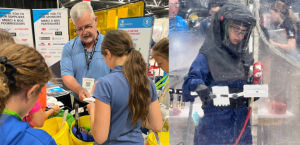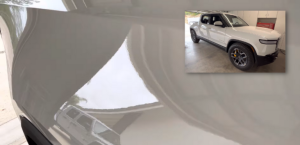THE ROLE OF AN INSTRUCTOR
BY BEN HART
Students across the country attend post-secondary technical training through a pre-employment (direct entry) course or an apprenticeship program. I instruct autobody tech apprentices as they come for their four periods (blocks/levels) of training. My classes run Monday through Friday, from 8 a.m. to 3 p.m., but I will typically be at the school from 7 a.m. to 4:30 p.m. Some readers are likely curious as to what an instructor’s tasks are outside classroom hours. What about the time during the school year between classes when the instructor doesn’t have students?
I view my position as two-tiered: I am a subject matter expert or SJE, although the term “expert” merely contributes to the dated hierarchy of traditional learning models. On the other hand–perhaps even more importantly–I am also an adult educator. Professional development is crucial to ensure constant evolution and adaptability in today’s fast-paced industry. Continually updating my knowledge of new vehicle technology, maintaining I-CAR training and being involved in the collision industry is paramount, but time-consuming. The other area I focus time on is studying andragogy — the theories of adult education — and pursuing additional training in this field. I am a student too.
A typical day of teaching, lesson planning, lab preparation, marking, administrative duties meetings and so on easily consumes the time before and after class. Ensuring the syllabus is followed on schedule adds to the responsibility an educator has for learners’ education. An educator only needs to be a few steps ahead of the student but will feel much more comfortable as that gap increases creating a bigger safety net.
Lesson planning and lab preparation are multifaceted. These tasks can be anywhere from simply preparing literature from a textbook, to providing a lab with prepared materials and equipment. In the collision industry, the learner should work on cars at some point in addition to labs. The instructor is responsible for locating damaged vehicles that will provide the necessary learning value for the students. Since my program teaches modern collision repair, I look for vehicles that are newer— ideally, less than eight years old—and have damage that coincides what is taught in the course outline. These are the type of repairs that most learners will be performing in the industry. Some schools use donated vehicles that will never go back on the road; other schools will repair vehicles for customers, or a combination of both. In any scenario, most schools spend a great deal of effort sourcing these vehicles for the learners.
My school fosters a student culture that I believe is the pinnacle of what we provide. Regardless of what tasks I perform before, during or after class, the purpose must be to benefit the student somehow. For example, if I spend my time training with I-CAR, will that trickle down to providing a better education for the students? If I continue to pursue a higher degree in education, will I become a better educator? If I network within the industry, am I going to bring something back of value for my learners? If the answer is yes, then the time I spent was worthwhile.
I love this industry. I hope and strive every day to impart a positive experience for my students that will be reciprocal.
Ben Hart is a Red Seal autobody technician and refinisher with nearly two decades of experience in the industry. For the past two years, he has instructed apprenticeship programs at the Southern Alberta Institute of Technology (SAIT). He previously worked as a foreman at a dealership bodyshop.




























